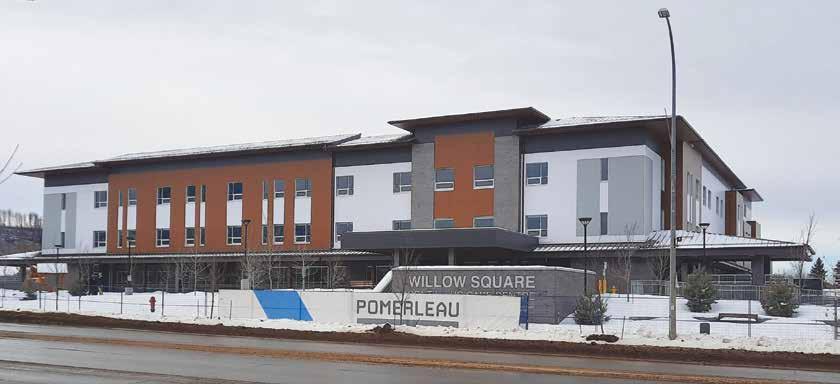
17 minute read
a long time coming: Willow Square Continuing Care Centre opens to residents this year
A long time coming
Willow Square Continuing Care Centre opens to residents this year
Construction for the $102-million Willow Square Continuing Care Centre, which came in under budget, started in April 2018 and faced a number of delays, including the 2020 April flood and the COVID-19 pandemic. Photos courtesy of Alberta Health Services.
Construction on a long-awaited continuing care centre was finally completed earlier this year.
The Willow Square Continuing Care Centre was handed over to Alberta Health Services (AHS) in January 2021, where they immediately began work on the commissioning phase of the project.
Construction for the $102-million project, which came in under budget, started in April 2018 and faced a number of delays, including the 2020 April flood and the COVID-19 pandemic.
“The flooding in downtown Fort McMurray last spring did impact the Willow Square construction site as the site laydown [storage] and outdoor parking areas had flood damage,” says David Ponich, AHS executive director, Capital Management, North Zone. “The basement and parkade level, which is the lowest level of the building, was flooded with about oneand-a-half metres of water.”
The structure was designed to sustain major flooding events, so the water did not reach the residential levels on the main floor and above. A flood damage assessment was carried out and remediation efforts started as quickly as possible.
Now that commissioning for the building has started, AHS is ensuring that their healthcare teams are all fully prepared to provide safe and quality care to patients prior to opening the facility. This work includes a final cleaning of the entire building, the installation of furniture and equipment, and also training staff to use the new medical equipment and systems, as well as to ensure that everything is working properly.
Willow Square will aim to deliver various levels of supportive living, long-term care, and palliative care and services.

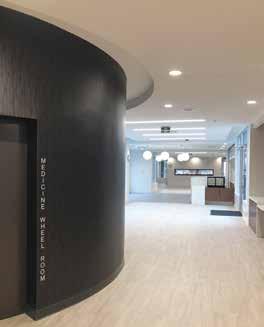

The continuing care centre features natural light, pathways, and gardens, which will all help make this new facility feel like home for residents, as well as help in their healing process.
Willow Square will aim to deliver various levels of supportive living, long-term care, and palliative care and services. The approximately 18,000-square-metre centre is spread out over three storeys and will include 108 spaces available on opening day in mid-2021, including 36 for long-term and palliative care. There will also be 72 spaces for supportive living. The third floor of the building will include 36 additional spaces that will be shelled for future development in order to address future capacity. The facility is built on 70 per cent of the Willow Square site and the remaining 30 per cent will be used for future developments as needed.
“The Willow Square Continuing Care Centre will provide residents in the Fort McMurray region a modern continuing care centre that will meet their present and changing residential and medical needs,” says Murray Crawford, AHS senior operating officer, Fort McMurray/ Area 10, North Zone. The continuing care centre features natural light, pathways, and gardens, which will all help make this new facility feel like home for residents, as well as help in their healing process. All resident rooms are private with accessible bathrooms, including zero threshold showers.
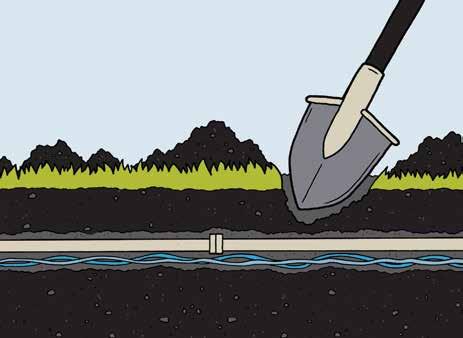
The project was built by Pomerleau Inc. and designed by S2 Architecture. This is the first Alberta infrastructure project that incorporates a geothermal exchange system into the building design. The geothermal exchange system is connected to the heating, ventilation, air conditioning (HVAC) systems. By doing this, the need for traditional boilers and cooling towers were eliminated and
AlbertaOneCall.com

Once open, Willow Square is expected to have more than 150 staff working on site, some of which will support the facility from the Northern Lights Regional Health Centre (NLRHC), which currently has 41 continuing care beds.
it allows the system to be fully electric, which will also eliminate the use of fossil fuels on site (except for emergency backup). The centre also has the flexibility to install solar panels in the future, if desired.
Once open, Willow Square is expected to have more than 150 staff working on site, some of which will support the facility from the Northern Lights Regional Health Centre (NLRHC), which currently has 41 continuing care beds. After Willow Square opens, those spaces will be repurposed to meet identified health priorities.
“Willow Square incorporates the highest standard of thoughtful design and we are excited to move into this beautiful new facility,” says Crawford. “Ensuring the comfort and safety of Willow Square residents will be our priority.” n

TS Signs is your local one-stop shop for signs, traffic control, printing, engraving, vehicle graphics, promo and more!
www.tssigns.com (780) 790-1945
A place for learning and connecting
Construction on the McMurray Métis Cultural Centre is scheduled to start in spring 2021 with an expected opening in 2023.

McMurray Métis Cultural Centre to start construction this spring
A brand-new cultural centre is coming to MacDonald Island.
Construction on the McMurray Métis Cultural Centre is scheduled to start in spring 2021 with an expected opening in 2023. The centre is owned by the McMurray Métis, a member of the Métis Nation of Alberta, whose primary goal is to help support Métis people in the region, as well as pursue the advancement of the Métis people in Northeastern Alberta.
“The McMurray Métis Cultural Centre has been a dream of the McMurray Métis for quite some time now,” says Melanie Walsh, social media and events coordinator with McMurray Métis. “It was Grant Golosky’s idea. He was born on MacDonald Island here in Fort McMurray, so the land that it will sit on has so much significance to McMurray Métis. We are really excited to be able to open this centre, not only for Métis people, but other Indigenous youth to relearn their culture.”
The land that the new cultural centre is being built on was transferred back to the McMurray Métis from the Regional Municipality of Wood Buffalo and holds a lot of significance to the Métis people in the region. Walsh says that a lot of elders were born and raised on MacDonald Island and it is also in close proximity to Moccasin Flats, an area of the city where, from the late 1970s to the early 1980s, a number of Indigenous families were evicted from their homes. In 2018, the McMurray Métis commissioned a study that examined the history and effects of the relocation and included recommendations for reconciliation. “We are so grateful to the Regional Municipality of Wood Buffalo for transferring that land back to us. It’s a big symbol of reconciliation as well since it’s so close to Moccasin Flats,” says Walsh. “Just being close to that original land and being on MacDonald Island has a lot of significance to our people.”
Once built, the centre will be around 45,000 square feet spread over two storeys. It will feature an innovative design, which will be in the shape of the Métis infinity symbol. In order to do this, T. Maginnis Cocivera, one of the founders of Mindful Architecture, who did the design of the project, says that there will be a long straight section, which is a bar in the middle featuring two storeys.
By Shayna Wiwierski
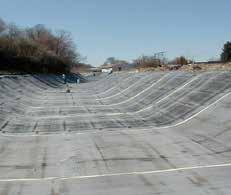
The building itself will be broken up into four sections, a gathering program, where there will be a big circular gathering space where the community can hold big events; an interpretive centre, which will be a museum-type space where the community can give information to the public and tell their story; a community wing, which will feature multi-use spaces that are available to the community to rent out and conduct their traditional teaching of Métis knowledge; and an office area that the foundation will use for future self-government function. It was announced in late March 2021 that local builder, Casman Group of Companies was awarded the contract to build the project.
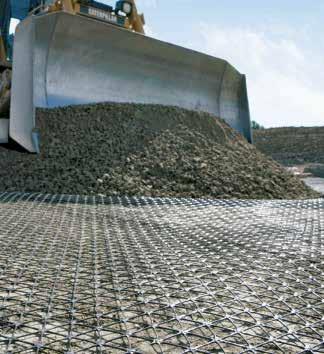
Cocivera says that most of the centre will be in the long, straight section in the middle, which will help with the energy, performance, and also for it to be the most cost effective. On either end there will be big ramps that come down onto the ground and invite people to walk up and over top of the building.

“The real concept there is to get people


The land that the new cultural centre is being built on was transferred back to the McMurray Métis from the Regional Municipality of Wood Buffalo and holds a lot of significance to the Métis people in the region.
to viewpoints where they can look out into important moments in nature and history,” says Cocivera. “For example, Moccasin Flats and the Athabasca River. That promenade over top of the roof is intended to be a timeline, so it can be a didactic promenade that is telling the story of the Métis people.”
Outside of the centre, the area will also include a playground, a wetland, an outdoor classroom, an amphitheatre,
nilex.com
1.800.667.4811
Geogrids used in Road design to improve subgrade and reinforce base gravels
ArmorFlex mats provide flexible, hydraulically stable protection in high-flow, high-scour applications
Bituminous Geomembrane (BGM) Exclusive Distributor - TERANAP Stormwater Chambers are used for underground infiltration - CULTEC

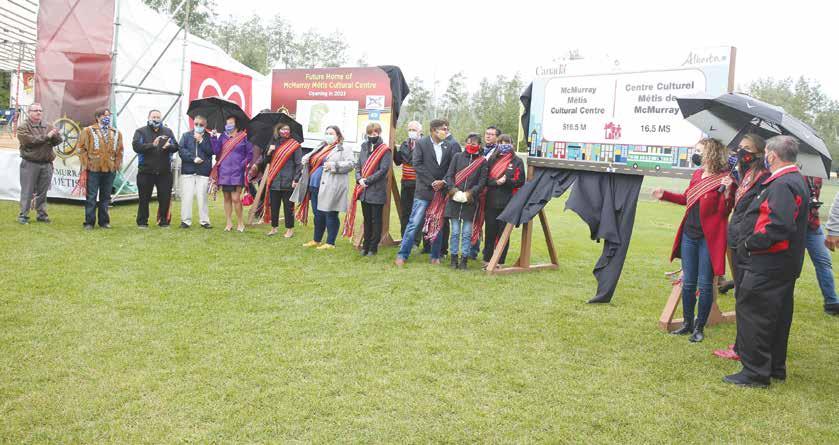
Once built, the centre will be around 45,000 square feet spread over two storeys. It will feature an innovative design, which will be in the shape of the Métis infinity symbol.
Left: Once completed, the $44 million centre, funded by the Alberta Government and McMurray Métis, will be looking at obtaining One Planet Living certification, which is an environmental certification that is from the United Kingdom and now spread worldwide.
and many interactive features in the landscape. They will also be planting traditional plants, food, and medicine, so there can be a botanical component where knowledge can be passed down to the community and youth.
Once completed, the $44 million centre, funded by the Alberta Government and McMurray Métis, will be looking at obtaining One Planet Living certification, which is an environmental certification that is from the United Kingdom and now spread worldwide. Geneviève Noel, the other founder of Mindful Architecture, says that they are aiming for that certification instead of LEED because they are also looking at the social aspect of sustainability and how this project is really revitalizing the culture and transmitting it to youth.
“It’s a very holistic approach, as is Métis culture and the values with living with the land, so we thought it was a good alignment for this project,” says Noel.
In addition to One Planet Living, McMurray Métis had a number of ambitious sustainability goals that include net-zero carbon and making the building highly efficient. They will strive to do this by having lots of insulation and good air tightness. In addition, since the project will be located next to the Suncor Community Leisure Centre, which features a pool, change rooms, and showers that consistently give off hot water, they will be able to take advantage of the sewer line which has a lot of heat.
“Without actually tapping into the sewage line itself, we are going to install a heat exchanger outside the sewer line to pull heat out of there for some heating of the building,” says Cocivera. “That’s an innovative system that has been used in areas like the Athletes Village in Vancouver and it happens to be one of the good opportunities on this site.”
Once the centre is officially open in 2023, it will bring many benefits to not only Métis and Indigenous people, but to the community as a whole.
“We will have elders come in and relax and tell their stories and gather with their loved ones. We also hope to have elder-youth interaction to keep our culture alive, which is so exciting,” says Walsh. ‘The main benefit, in short, is to help our culture flourish…. It will be nice to have another place to go and learn about local Indigenous culture right from the source instead of a textbook.” n
Introducing GroupHEALTH’s
FMCA EMPLOYEE BENEFITS PROGRAM
FORT MCMURRAY
CONSTRUCTION ASSOCIATION “ „ It’s hard being a small business owner in Canada and every little bit helps—especially these days. When dentists and other providers started shutting down due to COVID-19 we turned to GroupHEALTH to look for assistance since many benefits now could not be used. As a small Canadian business, it was so refreshing when they had our back and helped us out with some welcome relief—no way the ‘big guys’ would have done this. Stevens Pools Ltd

BETTER VALUE FOR EMPLOYERS
Disability Management
Confidential third-party solutions to manage employee absences, powered by Disability Management Institute
FormuCARE™
Protect plan sustainability through drug cost relief
Smart Rx
Keep plan costs affordable while ensuring employees have the prescriptions they need
BETTER BENEFITS FOR EMPLOYEES
Wellness Program
Employee & family assistance program with 24/7 support
Virtual Healthcare
Online, on-demand access to medical service providers
Critical Illness
Financial flexibility when life-altering illness occurs
Mobile App
Submit claims & review benefits on your mobile device
BETTER SOLUTIONS FOR PLAN ADMINS
Enrol-ME Online™
Hassle-free online employee enrolment
WEBS®
All-in-one online benefits administration
Ongoing Support
Dedicated service team for personalized assistance
FOR MORE INFORMATION
1-877-542-4110 nbdsales@grouphealth.ca
Racing against the clock
The Regional Municipality of Wood Buffalo continues flood mitigation work ahead of river breakup in spring 2021
By Shayna Wiwierski
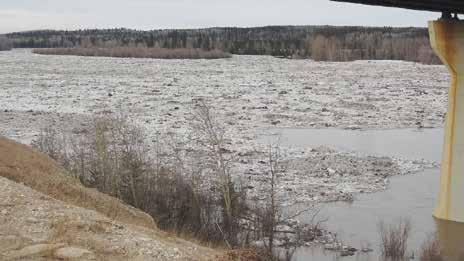
After a one-in-100-year flood event last April caused evacuation orders and destruction, the Regional Municipality of Wood Buffalo (RMWB) is undertaking work to mitigate flood damage in the future.
The work on flood mitigation in the region has been studied since 1964. According to Matthew Hough, deputy chief administrative officer for the RMWB, there have been 17 flood events recorded since the late 1800s, and there has been a substantial amount of damage caused each time.
The municipality’s latest flood was a multi-day event that began on April 26, 2020, and Hough says it caused just over $1 billion worth of damage, half of which were insurable losses. Because of this, the RMWB has expedited the flood mitigation program – which had already been well underway for a number of years now – in order to prepare the area for any potential flooding this spring.
“Since April 26, we have been working against the clock with consultants, contractors, and industry partners, and our fixation at the moment is river breakup 2021,” says Hough. “If timing is the same, we have between now and April 26 of this year to ready ourselves to keep the town dry.”
The municipality is focusing its efforts on the lower townsite area, made up of five discernible areas, one of which is the Taiga Nova Eco-Industrial Park, as well as a combination of homes and businesses. These areas lie below the one-in-100-year flood level and were affected by the April 2020 flooding. In 2016, the Province of Alberta required any structural mitigation, including the building of berms and structures, to be built to the one-in-100-year level. Since then, the work on this $280-million project has been ongoing.
“We have spent around $150 million since 2016 on structures, so berms that will protect our downtown, but the work isn’t finished yet,” says Hough. “The ice jam flood last year was incredibly unfortunate for us as a community, and of course for the individual property owners themselves.”
The work on the structural mitigation project is broken up into sections that are referred to as “reaches”. Out of 11 reaches, they have already completed approximately half: reaches one through four and reach nine. In 2021, they plan on spending $40 million on building berms, which will bring the whole project close to completion, slated to happen in 2022. In order to protect the downtown area from any potential flooding this spring, they have set up temporary mitigation for areas that are not yet protected by the permanent berms. These temporary berms are made out of clay, and they have spent several million dollars in moving clay this past fall to shore up these areas.
There have been 17 flood events recorded in the RMWB since the late 1800s, and there has been a substantial amount of damage caused each time.

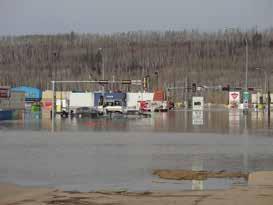
Left: The municipality is focusing its efforts on the lower townsite area, made up of five discernible areas, one of which is the Taiga Nova EcoIndustrial Park, as well as a combination of homes and businesses. These areas lie below the one-in-100-year flood level and were affected by the April 2020 flooding. Centre: The work on the structural mitigation project is broken up into sections that are referred to as “reaches”. Out of 11 reaches, they have already completed approximately half. Right: Once the flood mitigation program is complete in 2022, the municipality hopes that the public will have some peace of mind. This project will also prepare them in case a repeat event, like the one in April 2020, happens again.
“Part of the challenge of the program is that some of the segments were built at a lower elevation,” says Maureen Nakonechny, project manager with the RMWB. “So, we have to go back and make those higher to meet the one-in200-year elevation.”
Additionally, they have launched a major procurement effort to purchase other equipment to assist in protecting property in the flood area. The municipality is also looking at what Hough refers to as “box systems”, which are gabion baskets full of river rocks, as well as a large distribution of pumps throughout the downtown area. They can continue to keep properties dry through the year as they advance on the permanent solutions.
The permanent structural mitigation work involves the construction of earth berms and associated infrastructure, whether that be underground or surface works, including roads, sidewalks, and pathways. It also allows for the temporary mitigation, including the purchase and mobilization of equipment, to protect against a possible repeat flood event.
“Ice jam floods are very difficult to forecast and you can’t forecast them much in advance. You can only really track river breakup as it happens,” says Nakonechny. “There have been historical precedent of back-to-back floods and that’s what we are preparing for. We are putting up a lot of temporary mitigation in advance of 2021. So we put some temporary dikes in a lot of locations and also closed the RFP for alternative mitigation measures, like inflatable dams, aggregate carts, etc., so the work to get that in place is ongoing.”
Once the flood mitigation program is complete in 2022, the municipality hopes that the public will have some peace of mind. This project will also prepare them in case a repeat event, like the one in April 2020, happens again.
“I want everyone to know that this is our organization’s top priority throughout the river breakup this year,” says Hough. “We are pulling out all the stops to ensure that the impact that we experienced last year will not be felt again should we face another one-in-100-year flood.” n
We Supply Building Solutions
Insulation
Building Envelope
Masonry Mechanical Insulation
Forming/ Tilt Up
Roofing
Cladding Concrete Accessories
Geosynthetics
Waterproofing
21359 115 Avenue NW Edmonton, AB T5S 0K5 1-800-724-1774
www.BrockWhite.ca
Need to Hire Contractors in Fort McMurray?
The FMCA has you covered with our brand new contractor directory!
Have you been awarded work in Fort McMurray, and you need a helping hand? Solve this problem easily by finding local qualified contractors in our region.
Our new directory allows any construction company in Fort McMurray to post a free listing! This means you get access to a huge list of local companies who can help you finish your contract with ease.

So, what are you waiting for?
Visit us online and find the right contractor to help you! directory.fmca.net
FORT MCMURRAY
CONSTRUCTION ASSOCIATION







